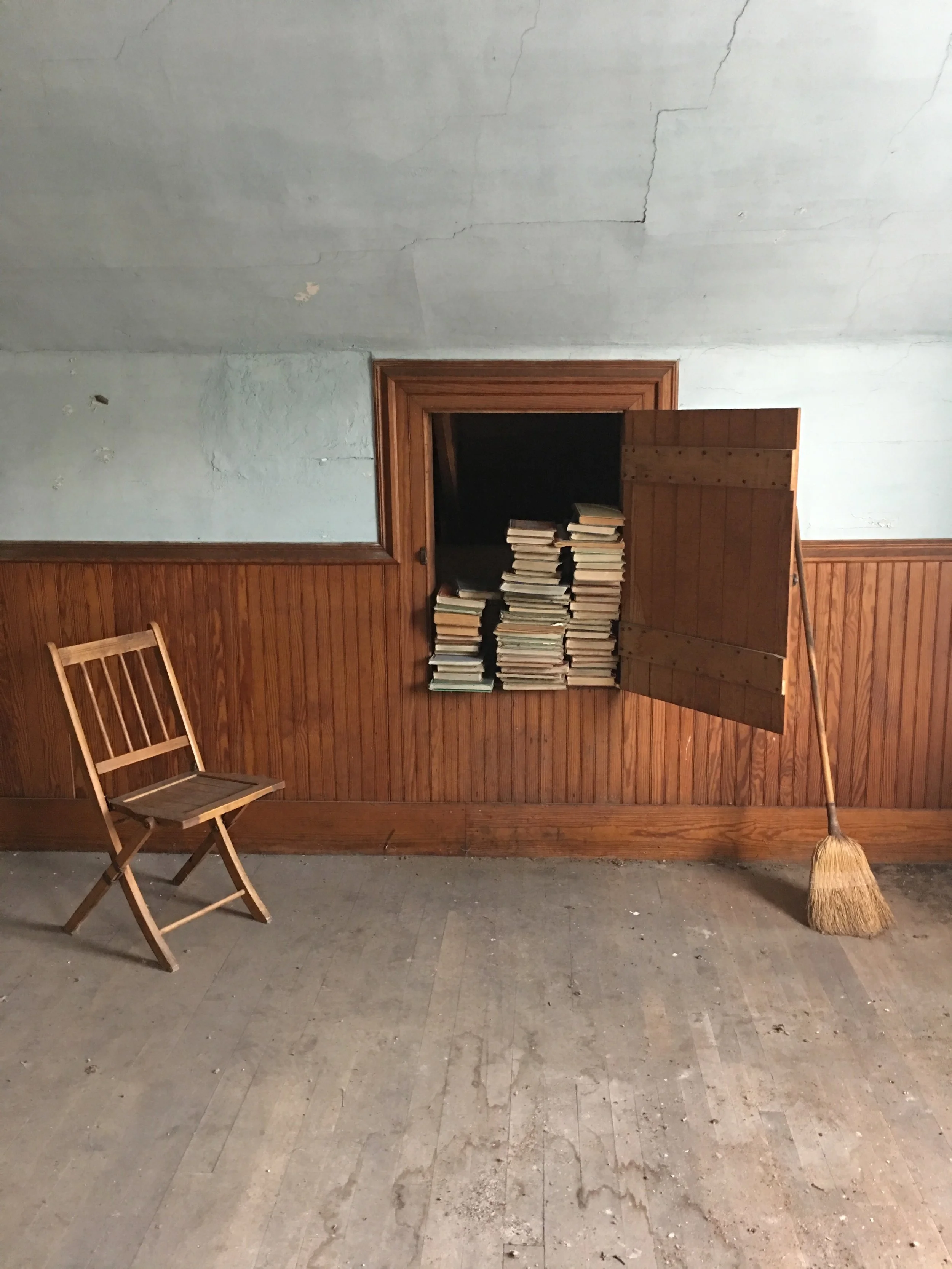Recipes Lost and Found
I found it in a dark hall closet in the upstairs of my town’s former Grange Hall, tucked behind a wooden crate full of broken table legs. A little stapled booklet titled, “Mini-Cook Book. Gihon Valley Grange No. 379,” handwritten on an orange craft paper cover. There was a small stack of these booklets on a dusty shelf, next to a pile of local directories from 1959. Utterly forgotten.
These kind of small-run, 20th century cookbooks, commonly compiled by churches and ladies auxiliary groups, have always sparked my curiosity when they turn up on someone’s bookshelf or in an antique shop’s bargain bin. My small collection of regional cookbooks includes the 1969 classic, “Our Favorite Recipes” from the Evanger Lutheran Church in Sargeant, Minnesota. It has 34 pages alone dedicated to recipes with the words “hot dish” or “loaf” in them, most of which feature some form of canned soup as a key ingredient.
To have discovered a cookbook made by the very people who used to live right here on my street long before I arrived was such a treasure. I strained to read the faded purple ink of the mimeographed pages. Page two had a recipe for Vermont Pumpkin Pecan Pie next to a recipe for Hard White Soap made with warm grease, lye and borax, no consideration given to compartmentalizing the entries by category. A recipe for Cream Puffs called for “1 stick oleo,” and mentions of Cool-Whip and Crisco led me to guess this artifact came out about 50 years ago, give or take. Certainly before the age of Xerox and before 1995, which is when the Gihon Valley Grange dissolved and passed the building over to the town of Hyde Park.
Unlike the cookbook from Sargeant, Minnesota, the people of 20th century Hyde Park, Vermont who compiled this collection appear to have relied more heavily on locally grown ingredients. You can imagine creative homemakers making good use of a summertime garden abundance in the recipes for “Squash Muffins” and “Cabbage Casserole.” Among the twenty recipes in the booklet, nine call for maple syrup, sometimes specific forms of maple -- maple sugar, soft maple syrup, or “fancy maple syrup” as in the recipe for Maple Syrup Milkshake. There’s also a recipe simple titled, Quickies: Pare, halve and core fresh pears. Cover with maple syrup. Bake 15-20 mins. at 350.
Back home, I decided to try a recipe for myself, Maple Muffins:
2 c. flour
3 tsp. baking powder
1/2 tsp. salt
1/2 c. soft maple syrup
1 c. milk
1 large egg
4 tbsp. melted fat
Mix & sift flour, baking powers & salt. Add maple syrup, milk & beaten egg. Beat well & fold in melted fat. Place in greased muffin tins & bake 15-20 mins. @ 375. Makes 18.
I’m not sure what they meant by "soft" so I just used local Grade A maple syrup, and since I am not in the routine of processing animals I didn’t have any fat sitting around. Butter would have to do. The results were light and spongy, perfectly sweet but not too sweet, and only the most subtle hint of maple. It’s actually a perfect muffin base recipe you could easily mix with blueberries, raspberries, or sliced strawberries. Or adapt into a cake with a maple frosting.
What I like about the recipes in the Gihon Valley Grange Mini-Cook Book, and the recipes in most mid-late-20th century books of that ilk, are how they’re stripped bare of any frills. There’s no over-explaining, and it’s assumed the reader knows his or her way around a kitchen. But most of all I like imagining the people who contributed the recipes baking and cooking these same dishes and bringing them to potlucks and picnics to share with friends and neighbors, which is what I did with my batch of muffins on Memorial Day weekend. And over muffins and beer and burgers I learned that my friend’s dad used to live just up the street from our house and has fond memories of attending events and school plays at the old Gihon Valley Hall. Suddenly the past seemed much more close at hand. Baking those maple muffins was my way of traveling back in time. Food as communion, food as time capsule, food as a way of carrying on.






